July 2007
![]() The
Big Money
The
Big Money
![]() Competitive
Equity: A Better Way To Organize Mutual Funds
Competitive
Equity: A Better Way To Organize Mutual Funds
![]() Crash
Proof
Crash
Proof
![]() Finding
The Next Starbucks
Finding
The Next Starbucks
![]() Getting
Started In Swing Trading
Getting
Started In Swing Trading
![]() Honey…
Who Shrunk Our Money?
Honey…
Who Shrunk Our Money?
![]() Quantitative
Trading Systems: Practical Methods For Design, Testing, And Validation
Quantitative
Trading Systems: Practical Methods For Design, Testing, And Validation
![]() The
Three Skills Of Top Trading
The
Three Skills Of Top Trading
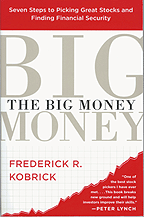 |
It takes only a few high-quality stocks in a portfolio to make big money. Finding winning stocks is a skill that a serious investor can learn, according to Kobrick. In this book he explains how the business model, assumptions, strategy, and management (BASM) is the touchstone for companies that will thrive and grow. Once investors have identified companies with great potential, he shows them how to use his Seven Steps to financial success. Simon & Schuster, www.simonsays.comBACK TO LIST |
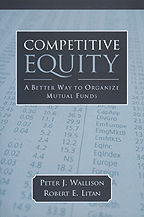 |
The $10 trillion in mutual funds today is more than for the entire US banking industry. With thousands of mutual funds crowding the marketplace it would seem there should be competition between the funds. Yet some funds charge three times the expense ratio of others. Funds are not competing on price. That is not good, as even small differences compound the investor's cost over time. The authors believe that a new, alternative, legal structure should be created in hopes of creating a more vibrant marketplace for investors. American Enterprise Institute Press, www.aei.orgBACK TO LIST |
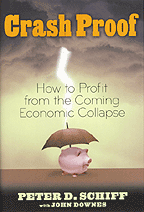 |
From both an economic and monetary perspective, the US is a house of cards -- impressive on the outside, but a disaster waiting to happen beneath the surface. Relatively quickly has it gone from the world's largest creditor to its greatest debtor. The dollar is in decline, and domestic manufacturing has given way to nonexportable services. The gathering clouds of growing personal, government, and corporate debt, too little savings, the declining dollar, and lack of domestic manufacturing are forming an economic storm. This book outlines a three-step plan to allow you to preserve your wealth and purchasing power. Wiley Book Order Department, www.wiley.comBACK TO LIST |
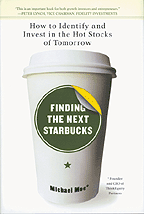 |
For more than 15 years, author Moe has made great calls on Starbucks and other stocks. In his first book, he shows how winners can be spotted in their start-up phase, and how you can identify future superstar stocks. The book includes interviews with some of the biggest names in business. Portfolio, published by the Penguin Group, www.penguin.comBACK TO LIST |
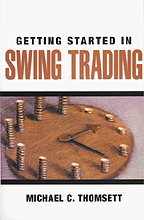 |
Swing trading is not a new idea, but only recently has this short-term technical trading strategy become a viable option for individual investors. This book will show you how to use this approach to take advantage of short-term price movements found in today's markets. It is filled with insights and practical advice and will enhance your understanding of this proven trading method as well as improve the overall profitability of your portfolio. Wiley Book Order Department, www.wiley.comBACK TO LIST |
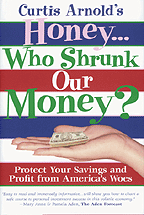 |
You need to understand the significance of the twin deficits (budget and trade), the strains that the aging population will put on our health-care system, how the energy crisis will get much worse, how other countries will bid up the price of resources, and how terrorism and unexpected weather events will drain our reserves and resources. The quality of life for most may decline, but yours doesn't have to. This book will show you what to do to protect your savings and profit from your investments in precious metals and natural resources. Princeton Financial Press, CMA Enterprises, 603 Xanadu Place, Jupiter, FL 33477BACK TO LIST |
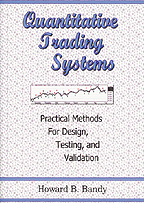 |
Too often, trading systems that looked good last year lose money as soon as you start trading them. This book explains why that happens and gives detailed techniques for developing systems that will be profitable. There is a list of learning channels from the difference between trading and investing to the size of the positions you take in a market. This book will change the way you look at investing and trading, and give you tools needed to develop trading systems. Blue Owl Press, www.blueowlpress.comBACK TO LIST |
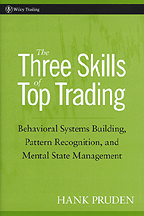 |
Trading in today's markets can be a difficult endeavor. The author, a well-known author and educator, looks to share his experience and insights in the field of finance. This is a straightforward guide that brings together the three top skills of trading and examines how you can develop this set to gain a competitive edge in today's markets. It will also help you sidestep timing pitfalls. Using this as your guide will give you a better understanding of systems building and pattern recognition, and help you develop the state of mental discipline to become a complete trader. Wiley Book Order Department, www.wiley.comBACK TO LIST |
Return to July 2007 Contents
Originally published in the July 2007 issue of Technical Analysis
of STOCKS & COMMODITIES magazine. All rights reserved. © Copyright
2007, Technical Analysis, Inc.